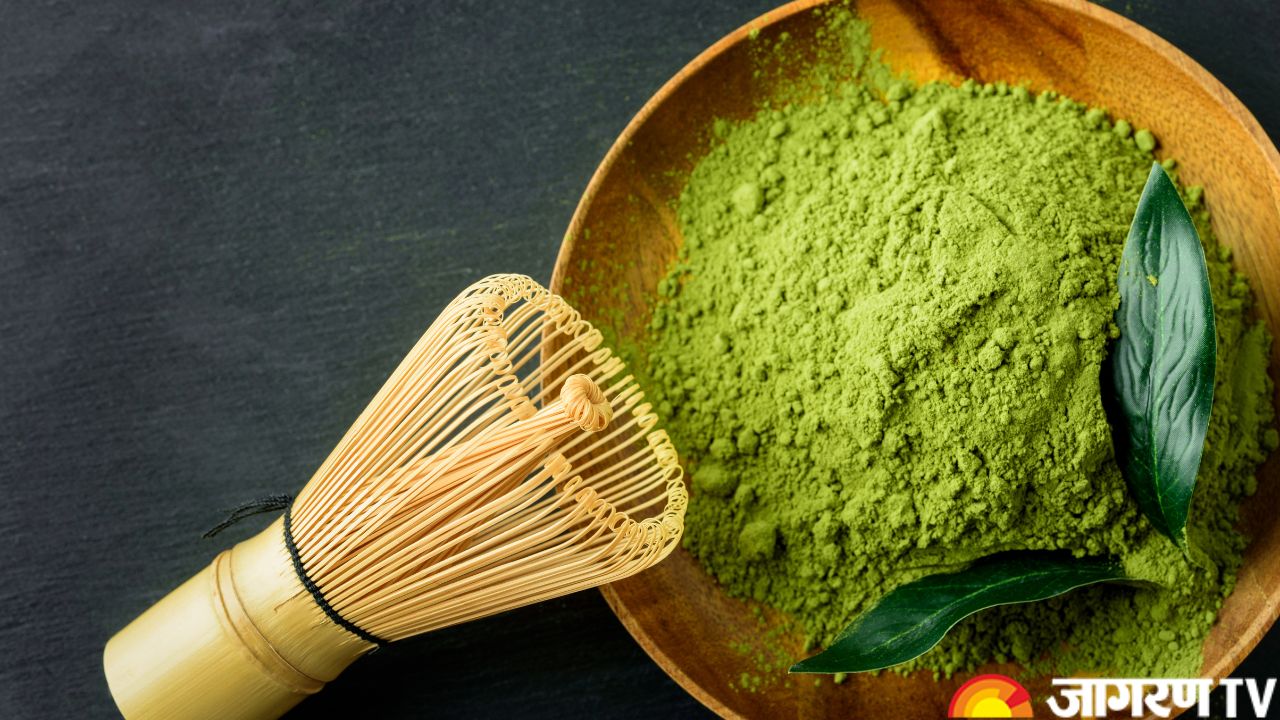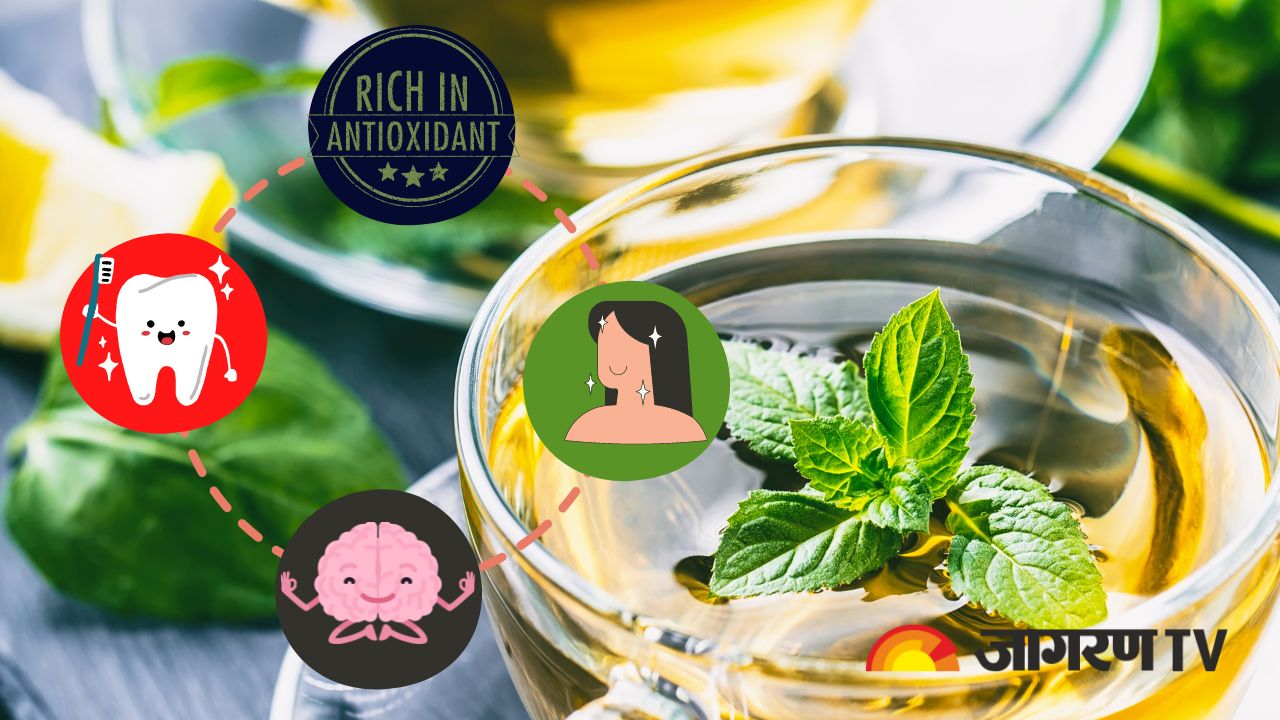Matcha Tea: The Ancient Green Powder Gaining Modern Recognition for Its Health Benefits, Know Uses, and More

Matcha Tea: There was once a trend of green tea, then came dalgona coffee, and now everyone is talking about matcha, the traditional green powder which was once confined to the ancient Japanese culture. However, people are now drinking matcha just like their regular coffee; matcha tea has become a global phenomenon, known for its vivid green colour, distinct flavour, and potential health benefits. This powdered green tea is much more than a trendy drink. It has a long history, a rigorous manufacturing method, and an intriguing chemical makeup that contributes to its unique qualities.
Origin of Matcha
Matcha's origins can be traced back to ancient China, specifically the Tang Dynasty (618-907 AD), when powdered tea was made by boiling tea leaves and shaping them into bricks for storage and sale. Myōan Eisai, a Buddhist monk, introduced this cooking process to Japan in the late 12th century. After studying in China, Eisai brought back not only Zen Buddhism but also a technology for making powdered tea from shade-grown tea leaves. He believed that drinking matcha helped with meditation by increasing awareness and attention.
During the Kamakura period (1185-1333), matcha became inextricably linked with Zen Buddhist temples and the complex Japanese tea ritual (chanoyu). It was once reserved for the privileged, including samurai warriors and aristocrats, before becoming more widely available throughout time. The exact cultivation and processing procedures that constitute modern matcha were refined in Japan, making it a traditional Japanese drink.
How Matcha is Made?
Unlike other green teas, matcha tea bushes (Camellia sinensis) are shade-grown for about 20-30 days before harvest. This stage, known as oishita en, boosts chlorophyll concentration, giving matcha its vivid green colour and improving its amino acid profile, particularly L-theanine.
After harvesting, the leaves are immediately steamed to prevent oxidation and maintain their brilliant colour and nutritional value. They are then air-dried, deveined, and destemmed to eliminate any coarse debris, revealing only the pure leaf flesh known as tencha.
The fourth and most crucial step is to grind the tencha into a fine, bright green powder with a traditional stone mill (granite) or modern ceramic grinder. This gradual and careful grinding technique avoids heat accumulation, which could harm the tea's delicate taste and minerals.
Matcha Chemical Composition
Matcha’s unique farming and processing methods contribute to its exceptional chemical composition.
Catechins (Polyphenols)
Matcha is particularly rich in epigallocatechin gallate (EGCG), a powerful antioxidant that contributes to many of its health advantages.
L-Theanine
This amino acid is only found in tea. It is responsible for matcha’s distinct umami flavour and ability to induce a feeling of calm alertness, which counteracts the jitters commonly associated with caffeine.
Chlorophyll
The pigment that gives matcha its green colour. Shade growth increases chlorophyll production, which is thought to have detoxifying effects.
Caffeine
While it contains caffeine, the addition of L-theanine modifies its effects, resulting in a continuous energy boost without the customary crash.
Vitamins and Minerals
Matcha contains vitamins A, C, E, K, and the B-complex, as well as minerals such as potassium, magnesium, calcium, and iron.
Dietary Fiber
Matcha contains a high concentration of nutritional fibre because it is consumed as a whole.
Matcha Uses
While matcha was historically consumed as a ceremonial drink, its widespread use has introduced it to everyone’s palate. It is a popular base for a range of beverages, including lattes, smoothies, iced teas, and cocktails. Matcha can be used to make cakes, biscuits, muffins, ice cream, mochi, and chocolates. It can also be used in savoury dishes like pasta dough, sauces, salads, and as a delicate spice for rice or vegetables.
Benefits of Drinking Matcha
-
The high content of EGCG combats oxidative stress, protecting cells from harm and potentially lowering the risk of chronic diseases.
-
The synergistic impact of L-theanine and caffeine promotes "calm alertness," which improves focus, memory, and reaction time without jitters.
-
Some research suggests that EGCG in matcha may help enhance metabolism and increase fat oxidation, perhaps aiding in weight loss.
-
Matcha’s antioxidants and other chemicals may help lower LDL (bad) cholesterol and triglycerides, potentially lowering the risk of cardiovascular disease.
-
Preliminary research indicates that matcha may help protect the liver from damage and minimise the incidence of liver disease.
-
Matcha contains dietary fibre, which can help with digestion and gut regularity.
-
Chlorophyll is commonly associated with detoxification abilities, which aid in the elimination of heavy metals and poisons from the body.
-
Matcha contains vitamins, minerals, and antioxidants that can help strengthen the immune system.









